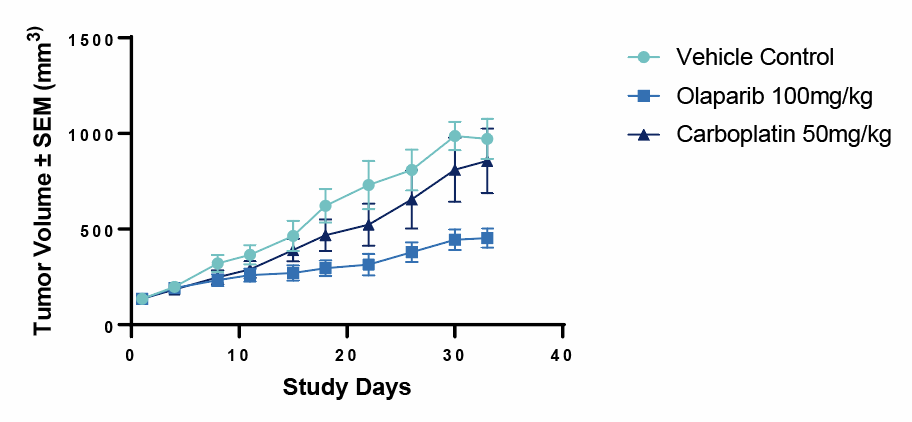NCI-H660 CDX Model
The NCI-H660 cell line is derived from human prostate neuroendocrine cancer, a rare and aggressive subtype of prostate cancer characterized by its neuroendocrine differentiation. Unlike the typical adenocarcinoma of the prostate, neuroendocrine prostate cancer does not express prostate-specific antigen (PSA) and is often resistant to conventional hormonal therapies. The NCI-H660 cell line provides a vital platform for understanding the complex biology, progression, and therapeutic challenges of this cancer subtype. It encompasses the distinct molecular features and genetic alterations characteristic of neuroendocrine differentiation, ensuring its relevance in preclinical research. The behavior of NCI-H660, both in vitro and in vivo, offers invaluable insights into the growth kinetics, invasive potential, and therapeutic resistance patterns of prostate neuroendocrine tumors. Researchers widely use NCI-H660 to study the disease’s unique molecular pathways, to test potential therapeutic compounds, and to explore innovative strategies targeting the specific vulnerabilities of this cancer subtype.
Model Details
Cancer Location: Prostate
Cancer Type: Prostate Neuroendocrine Cancer
Model Name: NCI-H660
Mouse Strain: Nu/Nu
Treatment Data Available: Chemotherapy (Olaparib, Carboplatin)
NCI-H660 Growth Curves

Growth of subcutaneous NCI-H660 in Nu/Nu mice (n=6 mice)
Request Additional CDX Model Data
CONTACT US
Get Started.
Have questions about how TD2 can assist with your regulatory needs? Reach out to our expert staff today to get started.


